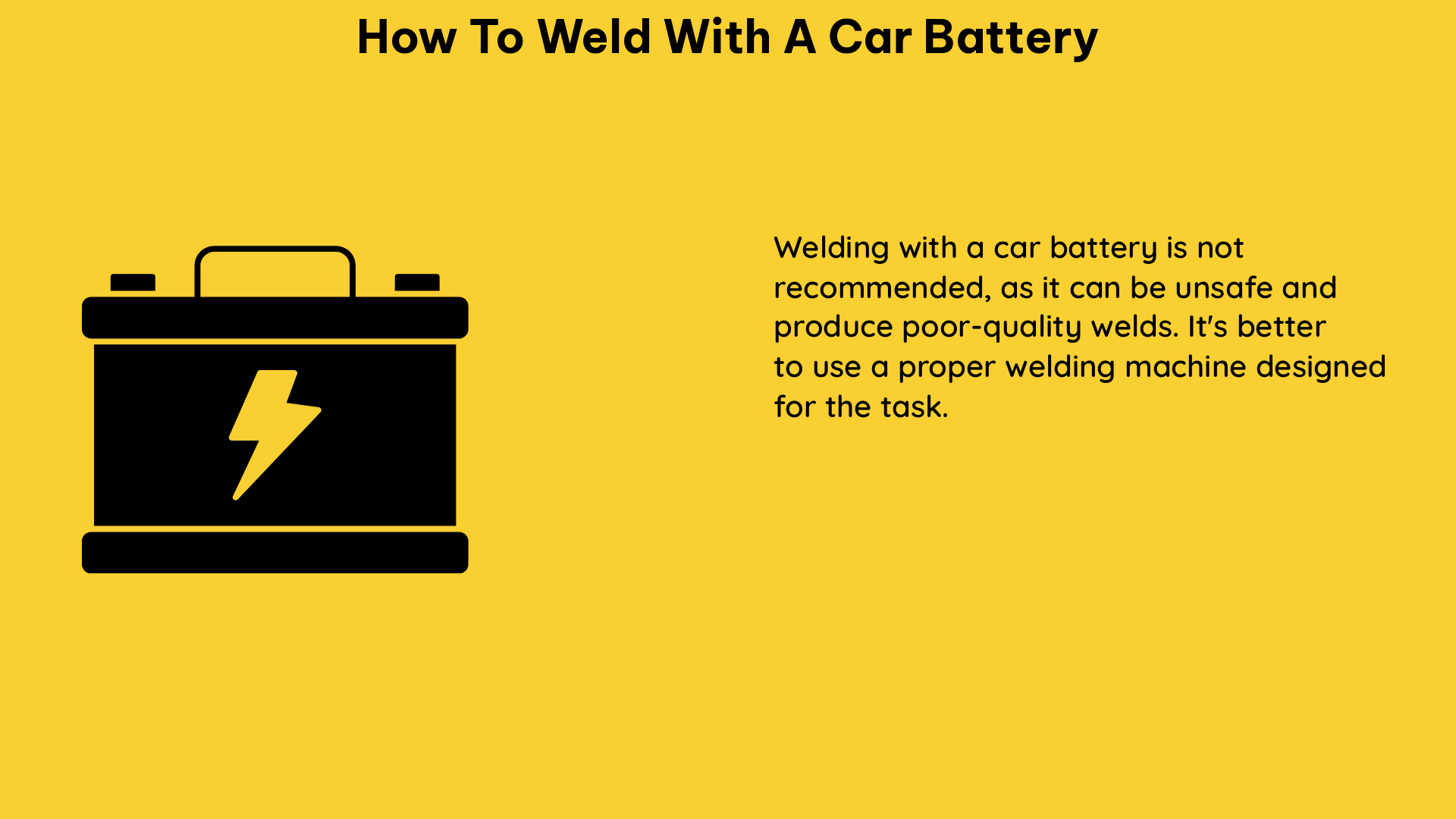Welding with a car battery can be a viable option for trail repairs, providing a portable and accessible power source. However, it’s crucial to understand the technical details and safety precautions involved to ensure a successful and safe welding experience. This comprehensive guide will walk you through the step-by-step process of welding with a car battery, including the necessary equipment, setup, and considerations to keep in mind.
Necessary Equipment
To weld with a car battery, you’ll need the following equipment:
- Two 12-volt Car Batteries: These will provide the necessary voltage and current for the welding process.
- Two Sets of Jumper Cables: Used to connect the batteries and the welding electrode.
- Arc Welding Electrode: This is the consumable material that will be used for the welding process.
- Piece of Metal for Grounding: This will serve as the ground connection for the welding circuit.
Step-by-Step Guide

- Connect the Batteries: Using one set of jumper cables, connect the positive terminal of Battery A to the negative terminal of Battery B. This will create a 24-volt power source.
- Connect the Ground: With the second set of jumper cables, connect the negative terminal of Battery A to a piece of metal near your welding site. This will serve as the ground for the welding circuit.
- Connect the Electrode: Attach the positive terminal of Battery B to your welding electrode using the same wire.
Technical Considerations
Voltage and Current
The setup described above will provide a voltage of 24 volts and a current of up to 400 amps, which is sufficient for most welding tasks. However, it’s important to note that the actual current output may vary depending on the specific batteries and their charge levels.
Energy Inflicted on the Batteries
Determining the exact joules of energy inflicted on the batteries during welding can be challenging, as it depends on various factors, such as the mass of the metal being welded and the duration of the welding process. However, we can make some comparisons to understand the energy dynamics:
- Spot Welding vs. Soldering: The heat energy of a spot weld is generally less than that of soldering, but the wattage (power) of both processes can be similar. If a spot weld occurs 1/100th of the time compared to a soldering iron, but has 1/100th of the energy, they would have the same wattage.
- Measuring Heat Energy: To measure the heat energy of a spot weld, you can weld nickel strips in a specific volume of water and measure the temperature increase, which can be used to calculate the joules. Repeating this process with a soldering iron can provide a comparison.
- Soldering vs. Spot Welding Damage: The question becomes how much soldering heat, in terms of time, temperature, and wattage, would be more damaging to the battery than spot welding. At some point, before a critical time point, soldering may be equal to or even less damaging than spot welding.
Safety Precautions
Welding with a car battery can be a hazardous process, so it’s essential to take the necessary safety precautions:
- Wear Proper Protective Equipment: This includes a welding mask, gloves, and protective clothing to prevent burns and eye damage.
- Ensure Proper Ventilation: Welding can produce fumes, so it’s important to work in a well-ventilated area or use a fume extractor.
- Avoid Welding Near Flammable Materials: Keep the welding area clear of any combustible materials to prevent fires.
- Disconnect the Vehicle’s Electrical System: Welding on a vehicle’s electrical system can cause damage, so it’s best to avoid it and only use the car battery for trail repairs.
By following the steps outlined in this guide and taking the necessary safety precautions, you can successfully weld with a car battery for your trail repair needs.
References
- Soldering vs. Spot Welding Debate
- How to: Car Battery Welding
- Welding with Car Batteries Question
- Quality Analysis of Welds Made with an Automatic Battery Pack Spot Welding Machine
- Could You Weld with Car Batteries?

The lambdageeks.com Core SME Team is a group of experienced subject matter experts from diverse scientific and technical fields including Physics, Chemistry, Technology,Electronics & Electrical Engineering, Automotive, Mechanical Engineering. Our team collaborates to create high-quality, well-researched articles on a wide range of science and technology topics for the lambdageeks.com website.
All Our Senior SME are having more than 7 Years of experience in the respective fields . They are either Working Industry Professionals or assocaited With different Universities. Refer Our Authors Page to get to know About our Core SMEs.